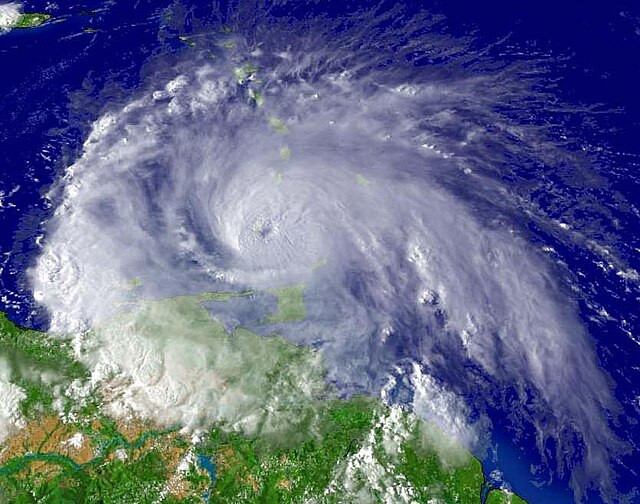Category 3 Hurricane Idalia made landfall in Florida August 30 for what is expected to be a record in Florida hurricane history. Many of the areas hit by the storm hadn’t previously experienced direct impact from such a storm. Construction job sites using Temporary power stations for electrical power are sustaining infrastructure, communication, healthcare, and other essential services.
Temporary power stations, or “job skids” are being strategically positioned to maintain or restore power. The process of deploying temporary power stations is being performed in a certain sequence.
Need Emergency Temporary Power?
Get Quote NowSell To Us
Got Electrical Equipment You Don't Need?

Reduce Your Electrical Inventories & Earn Cash
Sell My EquipmentPanelboard
Need a Panelboard for Your Project/Job?

Our Experienced Sales Engineers Can Help Design the Right Panelboard For You
Learn MoreTransformer Oil Testing
Is Your Transformer Due For Servicing?

Get Your Oil Analysis & Fluid Testing Done By Our NETA-Certified Techs
Learn MoreElectrical Product Resources
Product Training Product Safety Product Guides Product News Featured ProductsSite Assessment and Selection: Emergency management teams are assessing impacted areas to determine the most suitable locations for setting up temporary power stations. These locations are chosen using factors such as proximity to critical facilities, accessibility, and potential for efficient power distribution.
Station Setup: Once sites are identified, temporary power stations are being transported to affected locations. These stations are equipped with generators, fuel storage tanks, transformers, switchgear, and necessary equipment to generate, control, and distribute electricity.
Power Generation: The heart of a temporary power station are generators. These generators usually diesel-powered and can produce a generous supply of electricity. They’re started quickly to provide immediate power to the affected area.
Distribution Network: The generated power is being distributed using transformers to step up or step down voltage so that electricity is supplied at appropriate levels to different types of facilities and equipment.
Fuel Management and Control: Monitoring systems are allowing operators to track power output, fuel levels, equipment performance and other critical parameters remotely. This enables quick responses to any issues.
Using Construction Site Temporary Power Skids for Recovery Efforts
Once temporary electrical power stations are up and running, electricity output is allocated to various recovery efforts and essential including:
Critical Facilities: Hospitals, emergency shelters, and healthcare centers are being given top priority for power allocation. Electricity ensures that life-saving medical equipment, lighting, and climate control systems are operational.
Communication Infrastructure: Power is essential for communication systems, including cell towers, radio stations, and emergency broadcast systems. Restoring these systems, if needed, is helping disseminate information to the public and coordinate rescue and relief efforts effectively.

Water and Sewage Treatment: Power is required to operate water treatment and sewage systems. Access to clean water and proper sanitation is crucial for obvious health reasons.
Emergency Services: Police stations, fire departments, and emergency response units are relying on electricity to coordinate their efforts and communicate with each other. Power, where required, enables them to respond swiftly to situations.
Infrastructure Repair: Power tools and equipment are being used for clearing debris, repairing damaged buildings, and restoring infrastructure that relies on stable electricity. These efforts are vital for reopening roads, restoring transportation, and rebuilding communities.
Community Support: Temporary power stations can provide electricity for charging mobile devices, allowing first responders and residents to communicate. Power skids also power community centers where populations gather for essential services.
What’s On Power Stations in Hurricane Recovery Efforts?
Generators are the core of the power station, converting fuel into electricity. Transformers and switchgear (e.g., Circuit breakers, Distribution Panels) regulate voltage and manage electricity flow, for safe power distribution. Fuel storage tanks maintain a steady fuel supply to sustain generators.
Power distribution panels connect the generated electricity to areas and facilities on the sites. Monitoring systems have remote control features showing generator performance, fuel levels, and power output. Voltage regulators ensure stable electricity levels to prevent damage to connected devices.
Cables and wiring transmit electricity throughout sites, while emergency lighting gives visibility during outages.

All combined, these components form a comprehensive network to support disaster recovery, infrastructure repair, and essential services.
Power Skid Components for Hurricane and Storm Power Outages
| Equipment | Purpose and Description |
| Generators | Main power source that converts fuel (e.g., diesel) into electricity, providing immediate power. |
| Transformers | Adjust voltage levels for efficient power distribution to different facilities and equipment. |
| Switchgear | Controls and manages the electricity flow, ensuring safe and proper distribution to various circuits. |
| Fuel Storage Tanks | Store fuel (such as diesel) to sustain generator operation and maintain a continuous power supply. |
| Power Distribution Panels | Serve as connection points for distributing electricity to different areas and facilities on-site. |
| Monitoring Systems | Monitor and control generator performance, fuel levels, and power output remotely for efficient management. |
| Voltage Regulators | Stabilize voltage levels to prevent equipment damage and ensure consistent power supply to sensitive devices. |
| Cables and Wiring | Transmit electricity from generators to distribution points, connecting different parts of the temporary power network. |
| Emergency Lighting | Provides visibility during power outages, improving safety. |
| Fuel Management System | Tracks fuel usage, manages fuel delivery logistics, and ensures a continuous fuel supply for generators. |
| Safety Equipment | Includes fire extinguishers, warning signs, and safety barriers to prevent accidents for a secure working environment. |
In the aftermath of Hurricane Idalia, temporary electrical power stations are serving as a sign of progress. These Construction job site power skids mean essential services and communication networks are restoring communities. Through strategic deployment, efficient management, and careful allocation of resources, mobile job site power stations for temporary power are showing resilience in this Florida region’s darkest hours.
Custom Mobile Temporary Power Services
The temporary power solutions offered by Relectric can be completely tailored to the requirements of your project. Every Mobile Temporary Power Skid is made of Relectric tested, name-brand components, including a fusible primary disconnect switch, transformer, main breaker panelboard, and circuit breakers. They’re constructed with standardized parts for simplicity. These can be altered to add breakers, outlets, and other accessories relevant to your line of work.
For teams working on a sizable project where moving power sources from one part of the construction site to another is necessary, portable temporary power solutions are ideal. Everything from outdoor festivals and construction sites to crisis scenarios and brief power outages can use portable power devices.
Our mobile skids and portable generators are designed for simple transportation inside the work area, saving you money, time, and space. Power distribution boxes and other supplementary equipment can facilitate the efficient distribution of portable power throughout the jobsite or supply more power directly to the load.
Electrical Equipment Rental and Buyback Program
Using Relectric to power your building site is more convenient for both your employees and your budget. You won’t be forced to buy specialized equipment that will be useless once the task is finished thanks to our rental and buyback program for temporary power solutions.
You can rent electrical equipment for temporary power from Relectric or buy it with a guaranteed repurchase once it’s no longer required, depending on your project’s demands and budget. Each temporary power skid uses standardized components, so your equipment may be disassembled and the materials reused rather than stored or thrown away. By doing this, you can reduce your net costs and spare yourself the stress of having to decide what to do with your used equipment once your job is finished.
Reach out to Relectric for a quick and inexpensive quote on temporary power if you require it for industrial portable power or construction sites. Call 800.497.6255.
